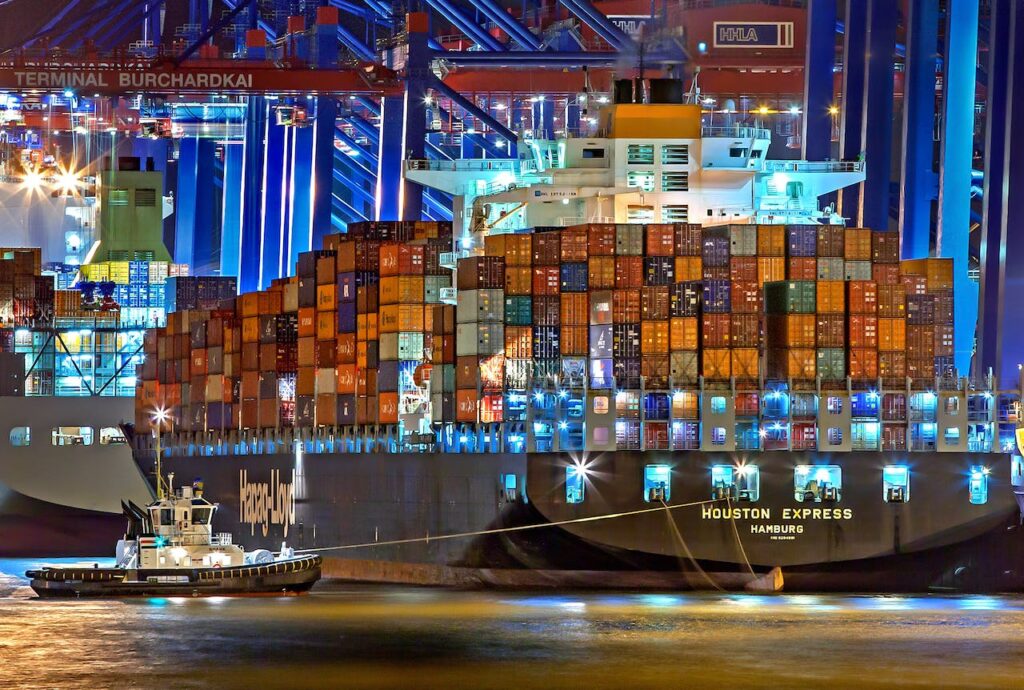In 2022 many Russian banks have been banned from international Banking transfers system also knows as SWIFT, which is the system that countries use to transfer money between each other. When it happened it was a serious shock to a Russian economy, a really big event that had greatly affected the country’s foreign financial operations, its internal and international trade.
In this article:
- What is SWIFT and why is it so important?
- How is it possible to disconnect the whole country from SWIFT?
- Which Russian Banks are still connected to SWIFT
- How did SWIFT ban and other banking sanctions affected the Russians
- So what is the SWIFT alternative for Russia?
- Crypto currency trade to bypass sanctions?
- The Bottom line
What is SWIFT and why is it so important?
SWIFT is a system used by banks worldwide to facilitate fast and secure money transfers. Why is it so important and how does it affect the trade, for instance, food and goods supply security you may wonder.
Today SWIFT is the main tool that is used when it comes to payments between the banks locally as well as in international trade between countries.
To understand what SWIFT is and how it works in international trade, imagine a company based in a cold Country A that wants to buy 100 tons of bananas from a company based in a warm Country B. Instead of sending a man with a bag of cash to Country B, the Buyer company from the Country A would make an electronic transfer from its bank account based in Country A to the Seller company bank account based in Country B. The banks would need to communicate somehow in a secure way so the country B bank can make sure the Country A bank holds required money in a Buyer’s account and will release these money to the Country B’s bank. In other words, the banks communicate on behalf of the Buyer and Seller and move the money between their accounts. Even if the actual money transfer between the banks might happen later or not happen at all, for the Buyer and the Seller companies dealing in trade, the money has been “transferred”.


The banks would need to communicate somehow in a secure way so the country B bank can make sure the Country A bank holds required money in a Buyer’s account and will release these money to the Country B’s bank. In other words, the banks communicate on behalf of the Buyer and Seller and move the money between their accounts. Even if the actual money transfer between the banks might happen later or not happen at all, for the Buyer and the Seller companies dealing in trade, the money has been “transferred”.
So in a nutshell, SWIFT is a most commonly used communication system between the banks that enables international money transfers between the countries that use it.
Now imagine that all the banks in Country A are suddenly switched off SWIFT. The Buyer has the money and is ready to pay, but the transfer doesn’t go through as there is “no signal” on the other side. The Seller in Country B can’t receive the money and therefore would not ship the bananas.

The Buyer needs the bananas urgently as the supermarkets shelves getting empty and you can’t really grow the bananas in the cold Country A. The Seller needs to receive the money asap to be able to ship the bananas as they are getting rotten waiting. The situation is getting really bad for both Buyer and Seller. So Seller is forced to urgently seek for another Buyer located in a country which banks are connected to SWIFT. And the Buyer from the Country A… well, he has to either simply forget about the bananas or find another way to pay the Seller for them.
As you might have already guessed, a “Cold Country A” in this example is Russia. And now add to bananas more substantial things like oil, agricultural fertilizers, pharmaceuticals, raw materials, machinery and components, spare parts and services for cars, airplanes, trains etc, computers, mobile phones – the list goes on.
How is it possible to disconnect the whole country from SWIFT?
If SWIFT is an international system that most countries in the world use today who can just simply switch it off? A better question is who owns and therefore controls SWIFT?

According to their own statement, SWIFT claims to be a “neutral” system that is “overseen” by the Group of Ten countries’ G-10 central banks and operates under the Belgian law.1 These countries are Belgium (also being the main representative for the EU), Canada, France, Germany, Italy, Japan, Netherlands, Sweden, Switzerland, the United Kingdom, and the United States.
At for the case with banning Russia, SWIFT officially announced that they “were prohibited from providing services” in Russia. “As Swift is incorporated under Belgian law and must comply with EU regulation, Swift disconnected all designated Russian entities (and their designated Russia-based subsidiaries) from the Swift network”. 2 Whether that lays anywhere near neutrality is up to the reader to decide.
Apart from Russia, Belarus and Iran are also completely banned from SWIFT as a result of the controlling parties decisions made in different times, and currently there is about 20 other countries3 that are significantly restricted in SWIFT operations.
Which Russian Banks are still connected to SWIFT
Although many Russian banks were switched off the system completely, there are quite a few that weren’t. The reasons for this are either that the bank has substantial European or US capital or is engaged in a Russian trade activity that the EU and the US have deemed important to them.
List of Russian Banks that are still connected to SWIFT
| Loko-Bank |
| Gazprombank |
| Raiffeisenbank |
| Rosbank |
| UniCredit Bank |
| Bank of St. Petersburg |
| MTS Bank |
| Russian Standard Bank |
| Zenit Bank |
| OTP Bank |
| Expobank |
| Tinkoff |
| BCS |
| Credit Europe Bank |
| Bank Avangard |
| Home Credit Bank |
| Renaissance Credit |
| Absolute Bank |
| Inteza |
| Post Bank |
How did SWIFT ban and other banking sanctions affected the Russians
The change although somehow presumably expected by the government still came in a big surprise to ordinary people. Here is what is like in Russia right now if you are a sanctioned bank’s customer:
- It is not possible to buy or sell shares of foreign companies through brokers under sanctions.
- UnionPay cards from sanctioned banks also do not work abroad.
- Banks under sanctions can not send international transfers through SWIFT.
- Apps of sanctioned banks have been removed from the App Store and Google Play, however can be downloaded from RuStore and directly from Banks’s websites.
Apart form that, banning Russian banks from SWIFT meant two significant problems that Russia immediately faced:
- Bank transfers inside Russia
- International Bank transfers
The impact of SWIFT ban on domestic transfers was minimal. Since 2014, when the first SWIFT ban threats were received from the US, Russia developed and implemented the National Financial Messaging System (SPFS). Currently, almost all transactions between Russian banks are conducted through it, and the switch wasn’t even felt by the people and organisations inside Russia.
With an international trade the situation was and still remains a lot more challenging as it involves other countries too. In order to continue the international trade, Russia had to find alternative ways to SWIFT that trading partners from abroad would accept and safely use.
So what is the SWIFT alternative for Russia?
SPFS was a good start to cover the domestic transaction in Russia but it’s presently nowhere near being at international level the SWIFT is. However, today not only Russian banks operate with SPFS. By early 2022, hundreds of financial organisations, including those from Belarus, Kazakhstan, Armenia, and 12 other countries, had connected to it. However, as of September 2022, the Central Bank of Russia stopped publicly disclosing information about participating banks, so the current number and the countries involved are unknown.

Another option in addition to SPFS is CIPS, meaning Cross-Border Interbank Payment System, which is a Chinese system that has been growing rapidly since 2015. Growing US-Chinese tensions and SWIFT sanctions on Russian banks was a wake-up call for China, so its reliance on its own system became vital.
Russian banks continue to connect to the CIPS; however, information about the participants remains partially undisclosed. It is known that by the end of 2022, 23 Russian banks had already joined the Chinese system, and by the summer of 2023, their number increased to 30.
India had entered into a Rupee-Ruble trade arrangement with Russia allowing both countries to trade independently of third countries currencies, however this mechanism is not very clearly established.
Crypto currency trade to bypass sanctions?
Russia’s central bank is working on a Digital Ruble4, which, among other reasons, aiming to facilitate cross-border payments. A Digital Ruble is a kind of CBDC, or Central Bank Digital Currency. CBDCs are currently being in active development by many countries around the world.
So what are CBDCs and what is the difference to cryptocurrencies such as Bitcoins?

CBDC and Cryptocurrency (e.g. Bitcoin) are fundamentally different things. Cryptocurrency has no single issuer, and there is no centralized authority that would bear obligations for it.
The Digital Ruble is a national monetary unit, a form of national currency. The issuance of digital rubles will be carried out by the Bank of Russia.
In simple words these are “Bitcoins” that issued, controlled and utilised by countries in both domestic and international transactions. Cross-border CBDC networks are currently in development across Asia, for example the mCBDC Bridge.
The Bottom line
In summary, it becomes more and more apparent that international trade is shifting towards more of a multi-system model rather than being dominated by a single system, no matter how good and easy to use it may be. This is not just a thing happening in Russia but also in many other countries around the world, including the EU.
The Reality is: countries are building and will continue to build alternatives to SWIFT.
This is not SWIFT’s fault but rather a strategy for risk diversification. The reasons are common, including the increasing loss of trust, reducing dependency on a single technology provider, and having the ability to control their own finances and trade.
- SWIFT “oversight” official statement ↩︎
- SWIFT and Sanctions official statement ↩︎
- SWIFT restricted countries ↩︎
- National Bank of Russia’s official statement on Digital Ruble pilot testing ↩︎
